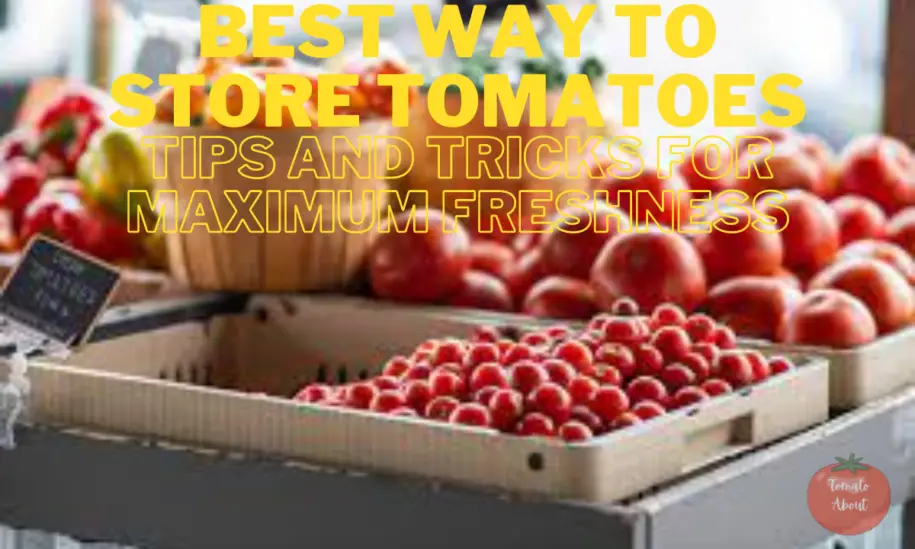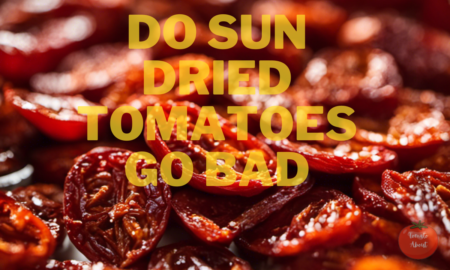The sun is shining, the tomatoes are ripe and red, and your garden is overflowing with these juicy summer treats. You’ve picked basket after basket, but now you need to know the best way to store tomatoes so you can keep enjoying them for weeks to come.
When tomato season hits, every gardener dreams of bountiful harvests. But once you’ve reaped your rewards, how do you make your tomatoes last? Proper storage is key to preserving flavor and freshness. Follow this guide to choose the ideal storage method for your needs.
Assessing Your Tomato Stash
Before deciding on storage, take stock of your tomato situation.
- How many tomatoes do you have? A few leftover tomatoes can be kept simple, while large hauls require more planning.
- What varieties do you have? Cherry tomatoes hold up better than beefsteaks.
- What condition are they in? Unripe, ripe, overripe? Their ripeness determines the best storage method.
- How soon will you use them? If they’ll be eaten in a couple of days, you can keep it casual. Longer storage needs more care.
Storing Tomatoes at Room Temperature
Keeping tomatoes at room temperature is perfect for freshly picked tomatoes you’ll be eating within 2-3 days. The key is avoiding direct sunlight.
Pantry or Counter Storage
For room temperature storage, place unwashed tomatoes stem-side down on a clean counter or pantry shelf away from sunlight. The stem end contains a tiny hole where gases escape during the ripening process – facing it down prevents moisture loss.
If you have a lot of tomatoes, spacing them out allows air circulation to prevent rotting. Don’t stack them or let them touch each other.
Hanging Tomatoes Upside-Down
Hanging tomatoes upside-down by their stems is an old-fashioned storage trick. The hanging position helps redistribute ripening gases and enzymes for fuller flavor development.
Find somewhere out of sunlight to hang tomatoes, like under a cabinet or ceiling hook. Be sure to check them daily and remove any that begin to spoil.
Room temperature storage preserves optimum flavor and texture. But tomatoes kept this way will only last 2-4 days before deteriorating. Eat them ASAP for the best quality.
Here’s a quick guide to room-temperature tomato storage:
| Storage Method | Duration |
|---|---|
| Counter or Pantry | 2-4 days |
| Hanging Upside-Down | 2-4 days |
Refrigerating Ripe Tomatoes
Once tomatoes fully ripen, move them to the refrigerator. The cold temperature slows down ripening enzymes and fungi growth to extend shelf life.
Leave tomatoes whole with stems attached. Place them stem-side up in the crisper drawer, or lay them individually on a refrigerator shelf. Avoid stacking them.
Keep tomatoes between 45-55°F for best results. At colder temperatures they risk chilling injury, developing mealy or flavorless flesh.
Refrigeration preserves texture and locks in existing ripe flavors. But it stops further ripening, so don’t fridge unripe tomatoes! Refrigerated tomatoes last around 5-7 days.
Here are the fridge storage details:
| Fridge Temperature | Duration |
|---|---|
| 45°F – 55°F | 5-7 days |
Freezing Tomatoes for Cooking Use
Freezing is the only long-term storage for abundant harvests. Frozen tomatoes are softened, making them only usable for cooking.
Blanch tomatoes before freezing to deactivate enzymes that cause loss of flavor and texture. To blanch:
- Bring a large pot of water to boil.
- Use a paring knife to score an “X” at the bottom of each tomato.
- Working in batches, submerge tomatoes in boiling water for 1 minute, then immediately transfer to an ice bath.
- Peel off skins, cut out cores, and chop or purée flesh as desired.
- Pack tomatoes into freezer bags or containers, leaving 1⁄2 inch headspace. Squeeze out excess air.
- Seal and freeze for up to 12 months.
For best results, opt for sauce or purée rather than diced or sliced. Frozen whole tomatoes become mushy when thawed.
Freezer storage lets you keep tomatoes for a maximum time:
| Freezer Temperature | Duration |
|---|---|
| 0°F or below | 12 months |
Choosing the Best Storage Method
Now that you know the storage options, use these tips to choose the right method for your situation.
For Unripe Tomatoes
Keep unripe tomatoes at room temperature and out of direct sunlight. Stowing them in a paper bag or wrapping in newspaper helps trap the ethylene gas they produce to hasten ripening. Once ripe, move them into the fridge.
For Ripe Tomatoes
If eating within 2-3 days, room temperature is great. Otherwise, refrigerate. Prioritize eating refrigerated ones as soon as possible for premium freshness.
For Overripe Tomatoes
Compost pile-bound tomatoes can be frozen for cooking instead of being wasted! Blanch and freeze any questionable ones.
For Small Harvests
A few tomatoes are easy to use up quickly. Keep on the counter and enjoy their optimum flavor!
For Large Harvests
Take advantage of all storage methods. Room temp and fridge for eating fresh; blanch and freeze excess for cooking all winter long.
For Long Term Storage
Freezing is the only option for long-term storage past 1-2 weeks. Blanch tomatoes for freezer prep to enjoy their flavor in cold-weather meals.
| Situation | Best Storage Method |
|---|---|
| Unripe Tomatoes | Room temperature out of sunlight to ripen |
| Ripe Tomatoes, Eating in 2-3 Days | Room Temperature |
| Ripe Tomatoes, Eating after 2-3 Days | Refrigerate |
| Overripe Tomatoes | Blanch and Freeze for Cooking |
| Small Harvest | Room Temperature |
| Large Harvest | Variety – Room Temp, Fridge, and Freeze |
| Long Term Storage | Freeze |
Storing Tomato Products
Beyond fresh fruits, consider how to store tomato products like sauce, paste, canned tomatoes, sundried tomatoes, and more.
Sauces and Pastes
Once opened, keep tomato sauces and pastes refrigerated in airtight containers for up to 10 days. For longer storage, freeze in usable portions for up to 4 months.
Canned Tomatoes
After opening the can, pour tomatoes into an airtight container and refrigerate for up to 5 days. For maximum shelf life, can freeze them yourself within 2 days of opening.
Sundried Tomatoes
Store unopened sundried tomatoes in a cool cupboard for up to 1 year. Once opened, refrigerate for up to 2 weeks. For longer storage, freeze for up to 6 months.
Tomato Juice and Soup
Once opened, tomato juices and soups will last 4-5 days refrigerated. Freeze for longer storage.
Signs It’s Time to Toss Your Tomatoes
When your tomatoes begin exhibiting these traits, it’s time to throw them out:
- Mold or rot spots
- Wrinkling or soft spots
- Unpleasant odor
- Unusual texture – overly mushy, dry, or mealy
- Liquid leaking or oozing from tomato
Discard damaged tomatoes immediately to prevent spoilage from spreading. Compost spoiled tomatoes rather than eating them.
When in doubt, remember it’s better to waste a few tomatoes than risk getting sick from eating spoiled ones.
Preventing Common Tomato Storage Problems
Proper storage methods help prevent issues like early spoiling, mold, and mealy texture. Here are some tomato storage mistakes to avoid:
Ethylene Exposure
Keep tomatoes away from ethylene-emitting fruits and vegetables like apples, bananas, melons, and stone fruits. Ethylene accelerates the ripening and fading of red pigments in tomato skins.
Sunlight Exposure
Never place tomatoes in direct sunlight, which heats them and causes rapid deterioration. Indirect light from an east-facing window is fine for green tomatoes ripening.
Refrigerating Unripe Tomatoes
Unripe green tomatoes stopped ripening when chilled. Only refrigerate fully ripened tomatoes.
Moisture Buildup
Wetness quickens mold growth. Dry tomatoes thoroughly if washing before storage. Don’t refrigerate tomatoes in sealed plastic bags which trap moisture.
Stacking Tomatoes
Never pile tomatoes on top of each other. The weight crushes those on the bottom, damaging skins and speeding up spoiling.
Refrigerator Temperature Fluctuations
Avoid storing tomatoes in fridge doors where temperatures shift. Keep them in the back of the crisper drawer for the most stable conditions.
How to Store Tomato Seeds For Next Year
Along with enjoying this summer’s tomato bounty, save their seeds for planting next year’s crop! Here’s how:
- When tomatoes are fully ripe, scoop out the jelly-like sacs containing seeds.
- Place seed sacs in a glass jar. Add a bit of water to cover, and secure the lid.
- Allow to ferment 3-4 days, until a layer of mold covers the top. This removes the gel coating on the seeds.
- Pour off the top mold layer and excess fluid. Rinse seeds thoroughly.
- Spread seeds on a plate to dry completely, for about 5 days.
- Store thoroughly dried seeds in an airtight container in the refrigerator. Seeds remain viable for 4 years.
Saving seeds ensures you’ll have free tomato plants next year!
Enjoy Your Tomato Bounty!
Now that you know the best storage methods for fresh tomatoes and processed products, you can keep enjoying summer’s bounty long after the harvest.
Room temperature and refrigeration preserve flavor and texture for eating tomatoes fresh. Freezing lets you save surplus tomatoes for cooking all year round.
Follow these storage guidelines to make your homegrown tomatoes last until next year’s crop!



